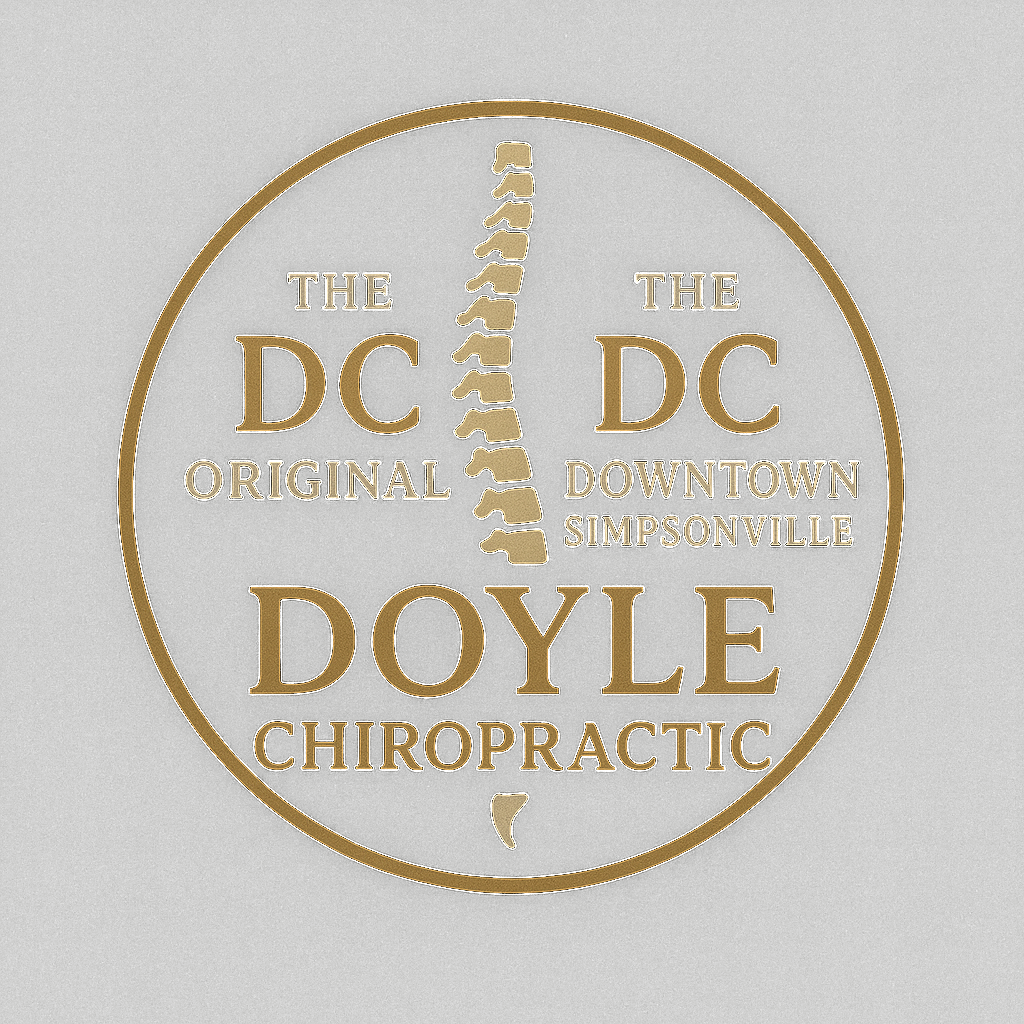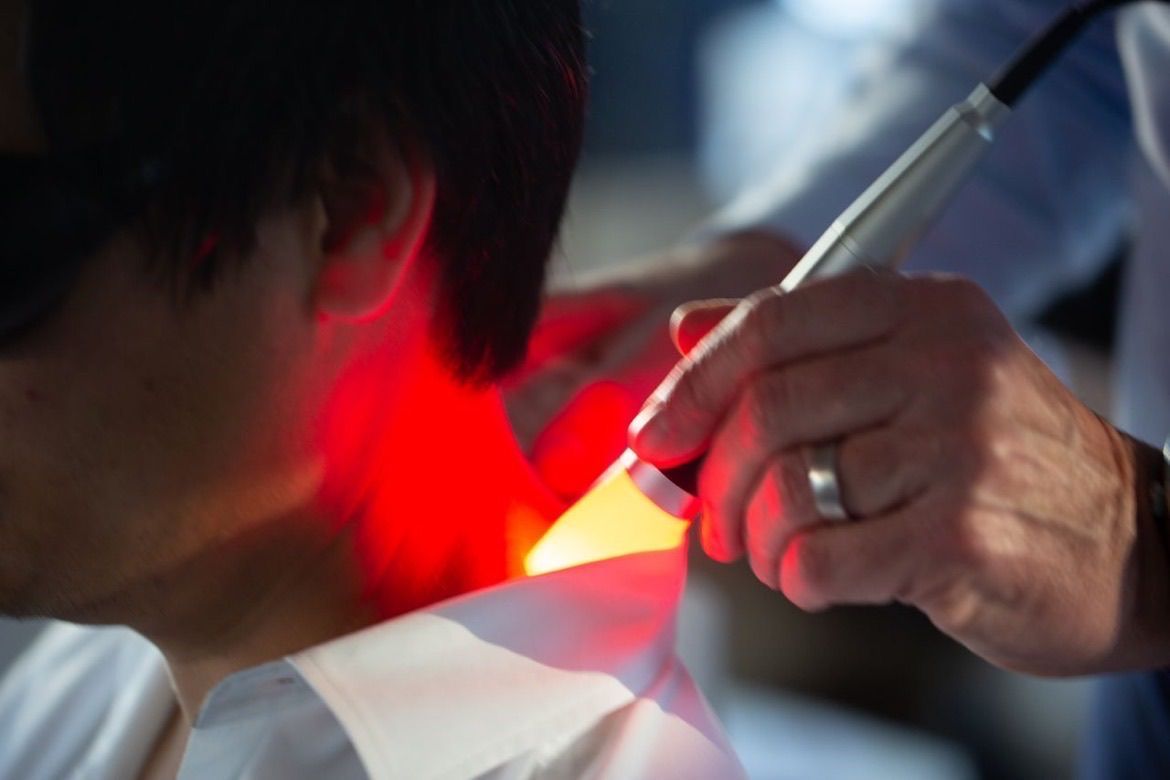Overview of Headache/Migraine Symptoms
- Dull pressure or aching anywhere along the head or temples
- Throbbing or pulsating pain (often one-sided in migraines)
- Sensitivity to light, sound, or strong smells
- Visual changes or disturbances
- Nausea or dizziness
- Tightness in the neck, shoulders, or upper back
- Pain radiating from the base of the skull into the temples or behind the eyes
- Headaches triggered by TMJ tension, sinus pressure, posture, or irritated cervical nerves
How Chiropractic Adjustments Can Help
- Misalignments and tight musculature in the neck can restrict blood flow and cerebrospinal fluid (CSF) flow to and from the head, slowing delivery of oxygen and nutrients and reducing the removal of metabolic waste — a common contributor to chronic headaches
- Chiropractic spinal and upper extremity adjustments restore proper movement in the cervical spine, relieving pressure on irritated nerves
- Improved alignment helps reduce muscle tension that refers pain into the head
- Correcting posture (especially tech-neck) removes ongoing strain that fuels chronic headaches and migraines
- As mechanical imbalances improve, patients often experience fewer headaches and less severe episodes
State of the Art Therapies for Headaches & Migraines
Laser Therapy & Shockwave Therapy
- Erchonia Class II Laser, Class IV Summus Laser, and Shockwave Therapy all help increase blood flow
- Stimulate cellular activity and promote faster tissue repair
- Break up scar tissue and tight muscles in the upper neck and shoulders
- Improve soft-tissue mobility around areas that commonly trigger headaches
Cervical Decompression
- Excellent for patients who are nervous about manual chiropractic adjustments
- Provides gentle disc stretching and rehydration without twisting or popping
- Reduces pressure on irritated nerves that often cause headaches or radiating pain
- Ideal for disc issues, arthritis, pinched nerves, or anyone preferring a more comfortable non-manual approach
City skyline
City skyline
What to Expect at Your First Visit
- Consultation and detailed history
- Full-spine X-rays
- Posture and cervical curvature analysis
- Neuro-orthopedic testing
- A relief-based treatment using the therapies best suited for your condition
Book an appointment to finally get relief from chronic headaches.
NERDS ONLY
The Deep Dive Into Why Headaches Really Happen
Many people are surprised to learn that a large percentage of headaches don’t actually originate in the head at all—they begin in the neck. These are called cervicogenic headaches, and they happen because the upper cervical spine (especially C1 and C2) has a direct neurological relationship with the nerves that supply sensation to the head, face, jaw, and behind the eyes. When those upper joints become irritated or restricted, they refer pain into the temples, forehead, base of the skull, and even behind the eyes.
Where this gets even more interesting is how alignment, curvature, and fluid flow influence headache patterns. When the cervical spine loses its normal lordotic curve, or when the head begins drifting forward (known as anterior head translation), the C1 vertebra often shifts into a position that places subtle compression against the brainstem region. This area is incredibly important because it controls the flow of cerebrospinal fluid (CSF) between the head and the rest of the body. If C1 is out of position, even slightly, CSF movement can slow considerably.
City skyline
CSF flow is essential because it delivers nutrients and oxygen, while also helping the brain clear metabolic waste. When this circulation slows down, the brain becomes “congested.” Pressure builds. Waste products linger. And the body does what the body always does whenever it’s being deprived of oxygen, nutrients, or water—it alerts the conscious mind. One of the most common ways the body warns you is through headaches or migraine symptoms.
The vertebral arteries also play a major role. These arteries run up through the neck and actually pass through small holes on each side of the C1 vertebra. If the C1 vertebra rotates out of alignment, even slightly, it can narrow or kink the opening those arteries travel through. This doesn’t always block blood flow completely, but it can restrict it just enough to reduce the delivery of vital oxygen and nutrients to critical areas of the brain. When that happens, headaches, dizziness, eye pressure, and neck tension become far more likely.
This is why proper cervical curvature is so important. When the neck maintains a normal lordotic arc, the CSF moves freely, the vertebral arteries remain unobstructed, and the muscles of the neck don’t have to strain to hold the head upright. A loss of curvature forces the muscles to work harder, compresses the joints, irritates the nerves, and disrupts fluid flow—all of which create the perfect storm for recurring headaches.
When we combine these structural issues with the tight musculature that naturally forms around a stressed or misaligned spine, the problem intensifies. The nerves that exit between the vertebrae, especially those connected to the upper cervical ganglion, can become compressed or irritated. This leads to widespread referral patterns into the head, face, jaw, and behind the eyes. For many patients, this is the true root cause of their chronic headaches.
TMJ dysfunction adds another layer to the puzzle. Tight jaw muscles and misalignments in the TMJ can irritate branches of the trigeminal nerve, which further amplifies headache patterns. Sinus pressure, prior concussions, and postural strains like tech-neck can all worsen these issues, especially when the neck is already tight or misaligned.
This is why the therapies we use—such as laser, shockwave, decompression, and targeted chiropractic adjustments—are so effective. Laser therapy enhances blood flow and cellular energy; shockwave therapy breaks apart scar tissue and improves muscle mobility; and cervical decompression gently rehydrates the discs and reduces pressure on sensitive nerves without twisting or popping. Together, these treatments support the mechanical, neurological, and vascular components of headache relief.
Chiropractic often helps when medication doesn’t because medication only affects the symptoms. Chiropractic care focuses on the underlying cause: restoring curvature, aligning C1 and C2, decompressing restricted nerves, improving CSF flow, increasing oxygen delivery, and calming the muscles that trigger referral pain. When these systems function properly again, the frequency and intensity of headaches often decrease dramatically.
And if you’re still reading, then yes—you’re absolutely one of our “nerds,” and we love that. The more you understand the anatomy behind your headaches, the more empowered you become in your recovery. If headaches or migraines have been limiting your life, we’re here to help address the true root of the problem so you can finally feel better again.
Get Chiropractic Care for Joint Pain
Meet with a chiropractor near you at Doyle Chiropractic today. Our team in Simpsonville, SC, offers non-invasive and holistic treatment strategies for joint pain. Set up a time to discuss your chiropractic care options and start your journey to healing and an active lifestyle. Call us at (864) 881-4221 for expert chiropractic care.





